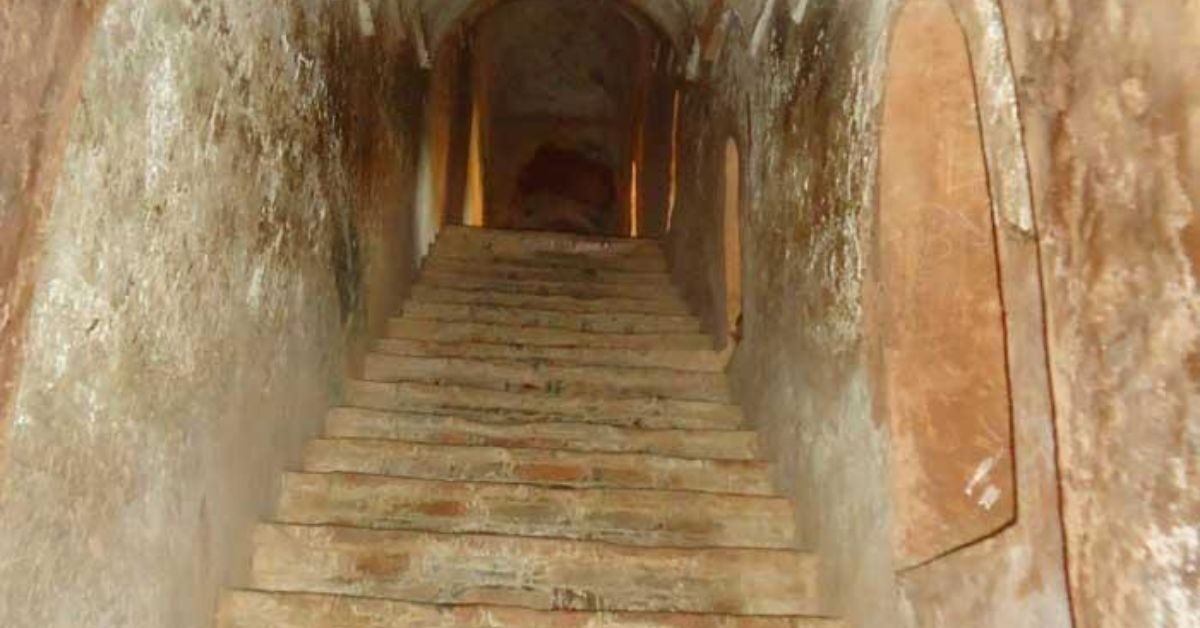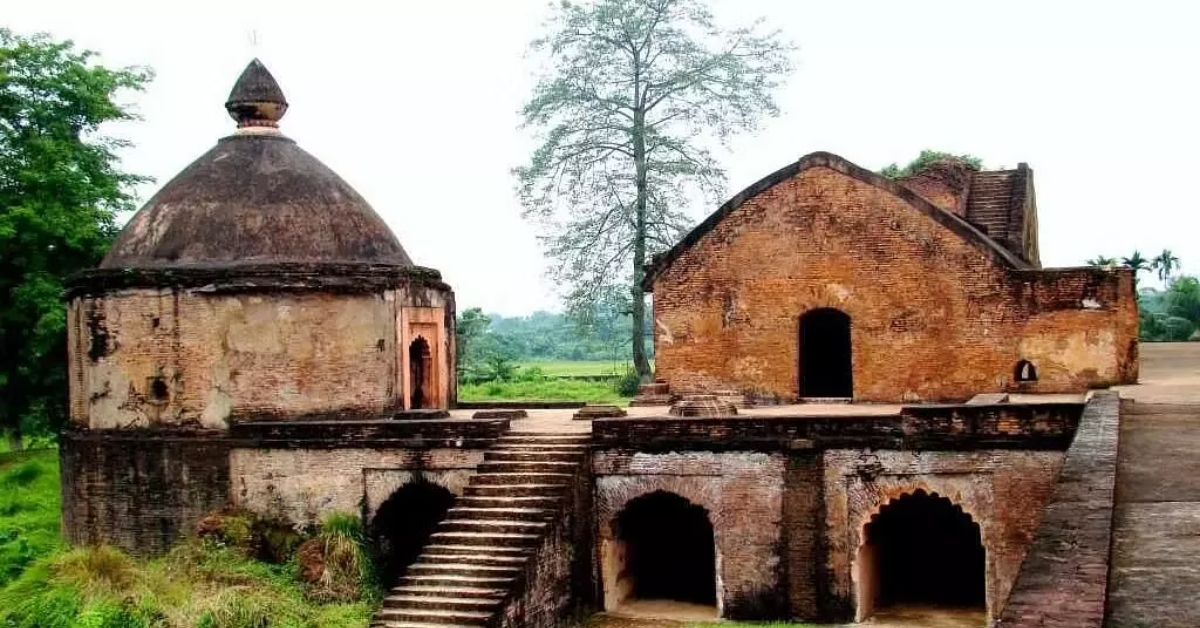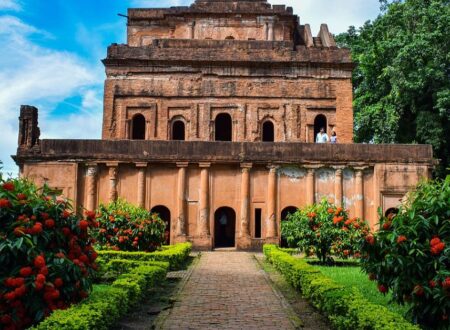Talatal Ghar is one of the oldest buildings in Assam that dates back almost 300 years. The Talatal Ghar is in Rangpur, Upper Assam, about 4 kilometers from modern-day Sivasagar. It is one of the most impressive instances of Tai Ahom architecture among all Ahom ruins. In addition, the Talatal Ghar is the largest of all Tai Ahom structures.
The Talatal Ghar was originally constructed as an army base. It’s famous for having two secret tunnels and three levels below ground level. That was in use as an escape route during the Ahom wars. The Rangpur Palace is a seven-story edifice (1751-1769 CE). Assam’s Talatal Ghar is of bricks and indigenous cement.

The Structure of Talatal Ghar
Talatal Ghar is one of the most historic places to visit in Assam. It spans multiple rooms on a broad corridor running east to west, and several smaller wings running north to south. Talatal Ghar had three underground levels and four levels above ground. The Royal Apartments were on the upper floor. Which is no longer visible except for a few rooms near an octagonal room on the northern wing. The terrace is accessible by stairs. In the south, an isolation room is thought to have been occupied by the queen during her confinement.
The two secret tunnels existed in the Talatal Ghar location. It is around 3 kilometers long and connects the Talatal Ghar to the Dikhow River. While the other is 16 kilometers long and runs to the Garhgaon Palace. Which served as an escape route in the event of an enemy attack. One led to the Dikhow River, which is roughly 3 kilometres long, while the other led to Garhgaon Palace. Which is 16 kilometres long, and was intended to be used as an escape route.
Overview
There are three stories underneath that were for the purpose of allowing the king to quickly evacuate the area in the event of an emergency or catastrophe. Kareng Ghar refers to the ground level of the Talatal Ghar, which was once home to Assam’s royal family. During the time when the state was under his control, the successor of the famous Ahom king Swargadeo Rajeswar Singha, known as Raja Swargadeo Rudra Singha constructed the topmost levels.

Animal stables, storerooms, and servants’ apartments were all located on the ground floor. Kareng Ghar was primarily of wood. Over time, this Assamese site was largely responsible for the destruction. Only a few rooms remain from the Royal apartments on the upper levels, next to an octagonal room on the northern wing that previously served as the prayer house.
How was Talatal Ghar Built?
The gorgeous monument is entire of organic materials, including bricks and cement from a blend of rice flour and duck eggs, which is an interesting feature of the monument. This Ghar is notable for its vibrant Assamese culture and traditions, as well as its rich history. It is well-famous for containing two hidden tunnels, one of which is to the Dikhow stream at a distance of three kilometres and the other of which is to the Garhgaon castle at a distance of sixteen kilometers.
The first Ground Penetrating Survey (GPR) in the northeast, conducted in early April 2015 at two Ahom monuments in Sivasagar district, Assam, found no evidence of a hidden tunnel. Also, the survey was conducted over a five-day period at Talatal Ghar and Ahom Royal Palace (Kareng Ghar), both in Sivasagar district, Assam, by IIT-Kanpur in partnership with the Archaeological Survey of India (ASI) Guwahati circle.
Today, visitors may now only see the ground floor, first floor, and the second and third floors. Hence, the underground floors of Assam’s Talatal Ghar are shut off, and most of the palace’s wooden sections have vanished over time. Regardless, The Ghar remains a big part of Assam’s historic heritage today.






